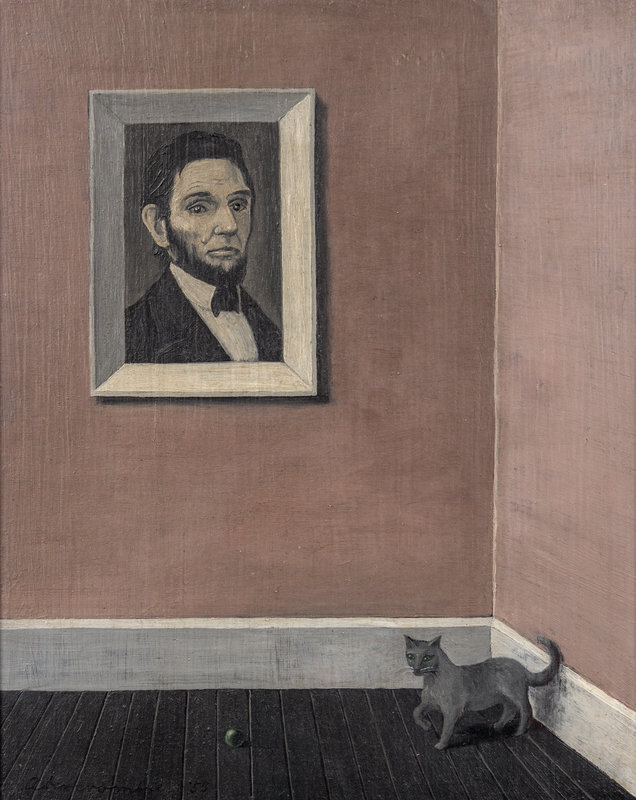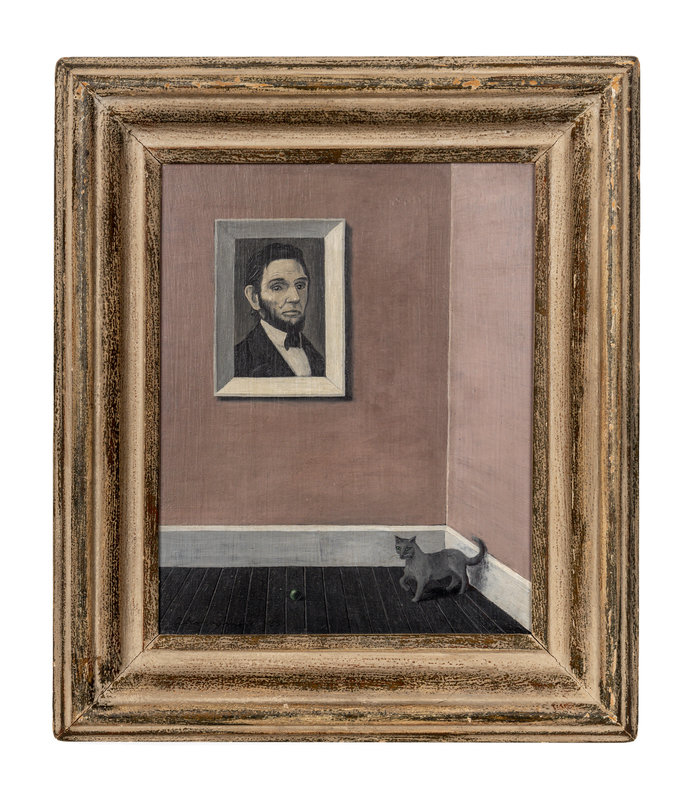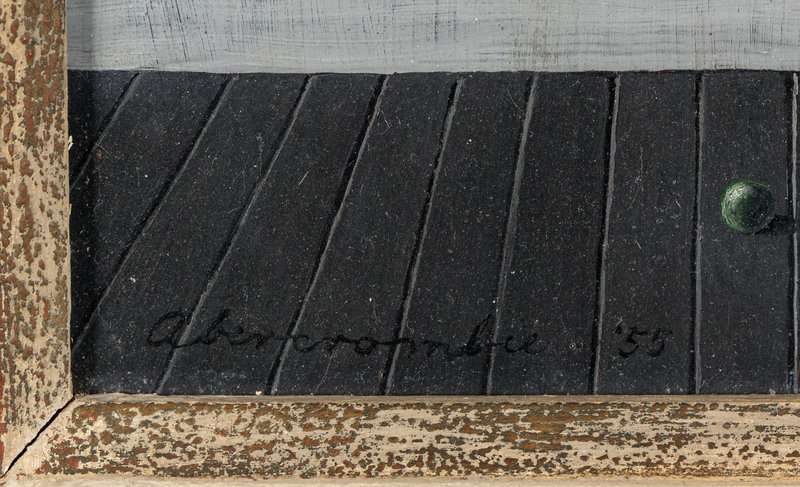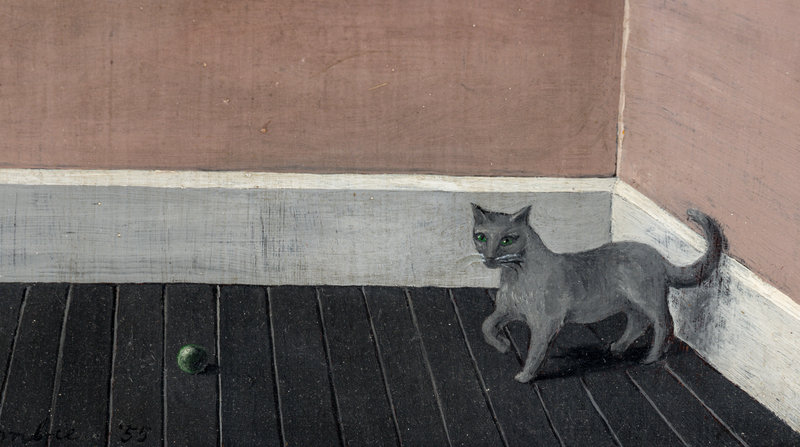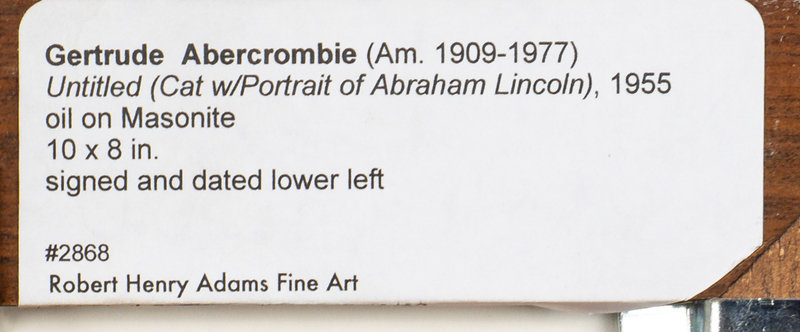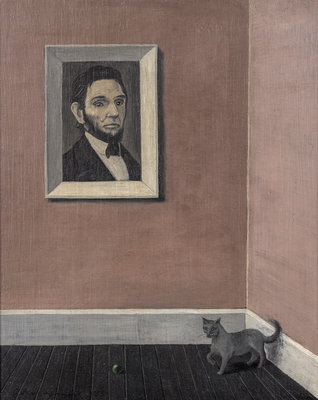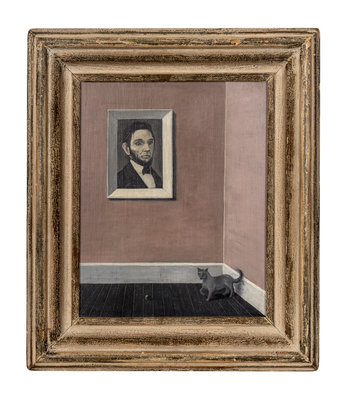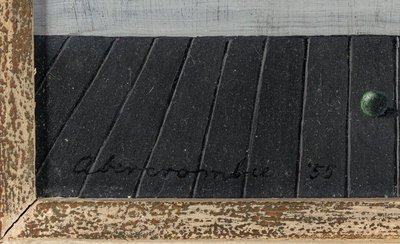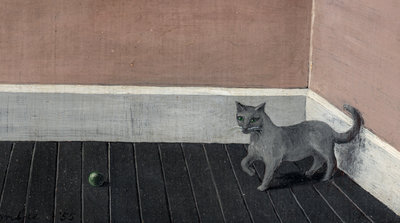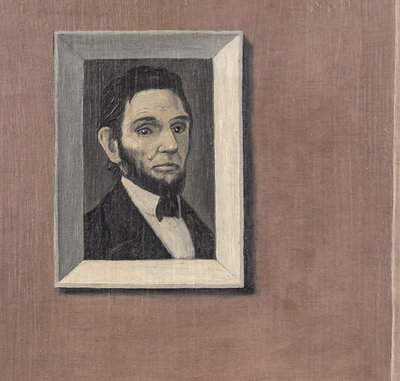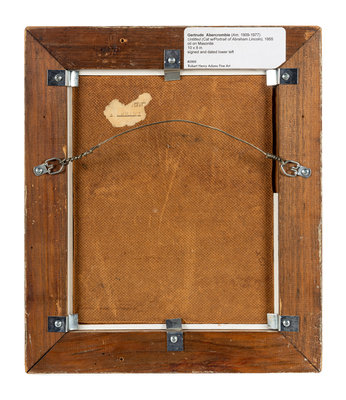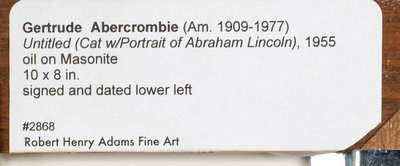Lot 126
We are grateful for the research conducted by Susan Weininger, Professor Emerita, Roosevelt University.
Provenance:
The Artist
(possibly) Dinah Livingston, the Artist's daughter
Robert Henry Adams Fine Art, Chicago
Purchased from the above
Exhibited:
Chicago, Illinois, Art Institute Rental and Sales Gallery, 1955
Chicago, Illinois, Old Town Art Gallery, 1957
Lake Forest, Illinois, Lake Forest Art Fair, dates unknown
Milwaukee, Wisconsin, Milwaukee Art Fair, dates unknown
Lot Essay:
Lincoln and Christine (Abe and Christine), 1955, depicts the corner of a room with one of Gertrude Abercrombie’s cats, Christine, looking at a ball under a large framed bust length portrait of Abraham Lincoln. The simple room, cat, and ball are staples of the artist’s work, but there are few images that include men. Portraits of male friends, some done on commission early in her career; several paintings in which her first and second husbands appear; and one or two of John Carradine, a favorite actor, are among them. Abraham Lincoln, however, appears in a number of her compositions.
Abercrombie included Lincoln by name in several works, including Abe Lincoln, 1942 (location unknown), a conventional half-length portrait with his top hat resting upside down on a table next to him; a smaller painting called Lincoln and Tower (Abe and Tower), 1954 (location unknown), that was exhibited widely in the 1950s; and Pink Visit (Lincoln Paying a Call), 1945 (Private Collection). There are also additional paintings in which Lincoln is not named in the title, but the familiar tall, black clad, top hatted figure is identifiable as the beloved president. Paintings such as Pink Visit, Mysterious Stranger, 1953 (Private Collection), and The Visit (The Night Visit), 1944 (location unknown), depict Lincoln in a landscape, either approaching or retreating from a simple, blocky structure. The top hatted figure appears in yet one more guise, that of a magician, in Levitation, 1967 (Private Collection), where he stands, arms at his sides behind a marble top table above which a woman (Abercrombie) levitates.
Abraham Lincoln held a special place in Abercrombie’s heart. As a dedicated Midwesterner who spent her childhood in the small western Illinois town of Aledo, where her father’s family lived, and her adult years in Chicago, Lincoln represented values important to the artist. Not only was he a quintessential Midwesterner, beloved by many in the state, but Abercrombie, whose social circle included many Black people, may have found his role in ending slavery even more meaningful. The number of times he appears in her paintings attests to the symbolic importance she attributed to him.
Likewise, Abercrombie had a powerful identification with her cats. When she was pregnant with her daughter, Dinah, she said she could imagine giving birth to a cat but not a human. She also once stated that “It is always myself that I paint,” referring not only to her human self, but to her cat surrogates as well. In this painting, Christine has the same green-blue, upturned eyes seen so often in Abercrombie’s conventional self-portraits, which underscores the identification. The austere room, reflective of the artist’s own sense of self-doubt and entrapment, is tempered by Abe’s benevolent presence, which pervades the room and whose protection extends to the artist herself.
Lincoln and Christine (Abe and Christine) is composed in a simple yet exacting manner that allows the monochromatic portrait to echo the gray cat, the molding of the frame to resonate with the baseboard molding in the room, and the soft pink grey of the wall to unify the whole. It is an example of Abercrombie’s ability to exquisitely connect the style and subject of her work to convey her meaning in a profound way.
